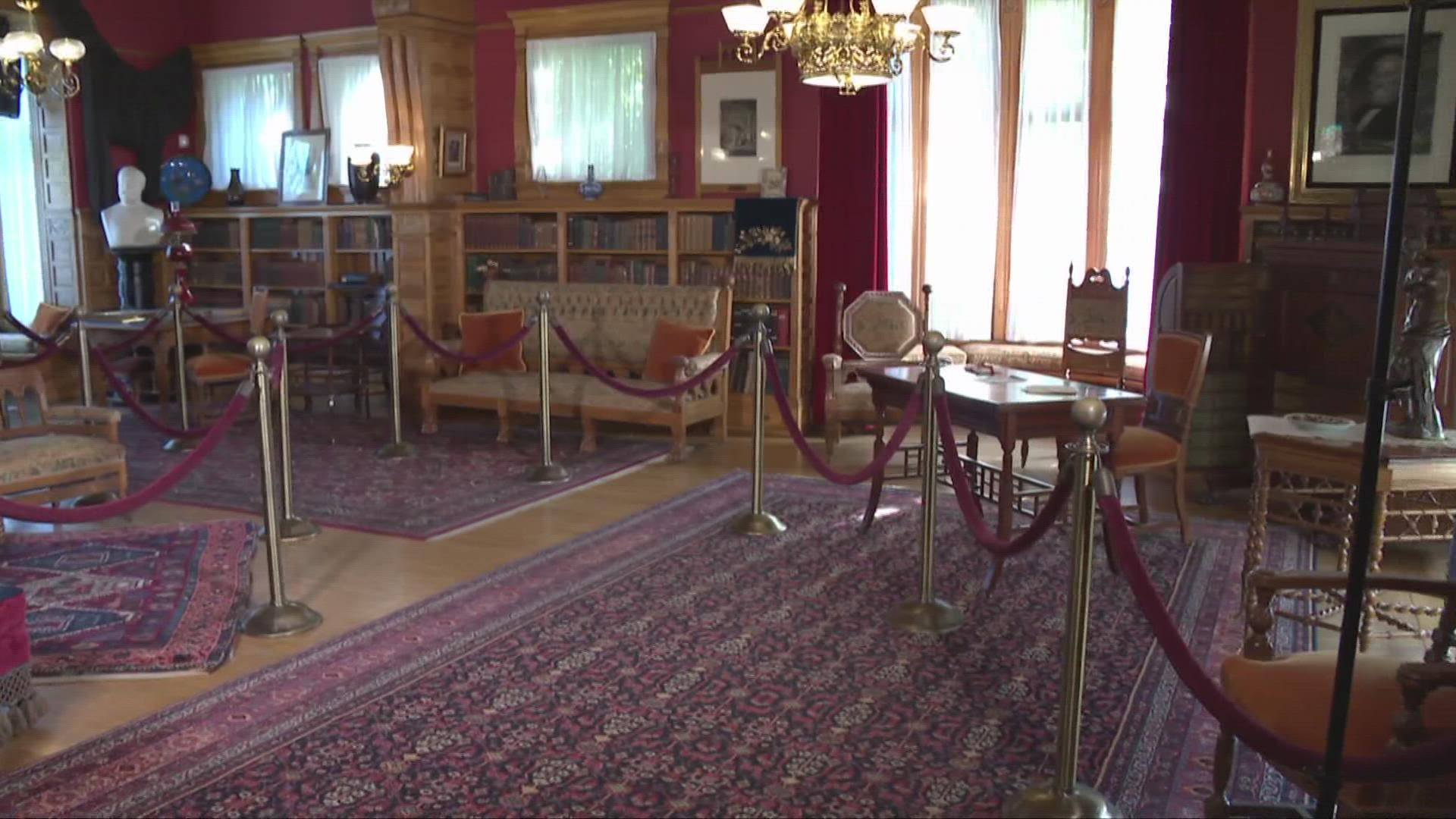MENTOR, Ohio — Right off of Mentor Avenue in Mentor, a house, painted gray with a red roof, stands shielded by trees. Just driving by, it could be mistaken for a stately residential home whose front yard is neatly lined by a white picket fence. But a sign standing next to the driveway reveals something special about the property and its presidential ties.
This property is the former home of President James A. Garfield, his wife, Lucretia and their family. A member of the Garfield family most recently lived in the house in 1934.
According to Todd Arrington, site manager of the James A. Garfield National Historic Site, part of the National Park System, the Garfield family bought the property in 1876. The property included a nine-room farmhouse which served as the family home they later expanded and at one point was about 160 acres. Today, the site consists of eight acres, including the museum/visitor center, outbuildings, and the main house.
Arrington said the family put work into the home to truly make it theirs, anticipating it being their forever home. However, at the 1880 Republican Convention, Arrington described a bit of a surprise; Garfield, previously not thought to be a contender for the presidency, became a "compromise candidate" and ended up securing the nomination and eventually winning the presidency.
"Once they left here in late February 1881, for him to go be inaugurated as president on March 4, 1881, he unfortunately never saw this property again because he was assassinated a few months later," Arrington said.
According to the White House presidential biography for Garfield, the 20th president was shot on July 2, 1881, in a Washington railroad station, and ultimately died from an infection on September 19, 1881.
While Garfield was not president for very long, his family left behind significant historical legacies in the house, including the first front porch campaign and the model for presidential libraries to come.
"This is the spot where James Garfield ran the first-ever front-porch presidential campaign," said Arrington, standing on the front porch of the Garfield Home. "He would come out of the front doors there, he would come out onto the porch, and he would talk to be people gathered out here."
According to Arrington, the porch that stands today was rebuilt after Lucretia Garfield had the original porch removed. Arrington said thousands of people would gather on the front lawn outside the home waiting to speak with Garfield and that Garfield was masterful at catering his speeches to those who stopped by. He is even believed to be the first presidential candidate to campaign in another language after speaking with a group of German immigrants.
"He was a renaissance man for his age, for sure," Arrington said.
Upon walking into the home's first floor, visitors will find rooms featuring original furniture and artifacts from the house. In addition to an entryway, the first floor includes the dining room and a parlor where Arrington said Garfield would welcome guests and visitors.
Up the stairs, visitors will find the section of home most recently added on by Lucretia after her husband's death, the memorial library. The library sports red walls with wooden beams and paneling and dozens of books from Garfield's collection are lining the walls. Tucked away behind the main portion of the library is a small room Arrington refers to as the "vault."
"Lucretia Garfield called this the memory room," he said. "She built this as part of the memorial library, it was in here that she actually stored all of her husband's letters, diaries, papers, really anything that had to do with his public career."
Arrington said most of Garfield's original documents are now in the Library of Congress, but a significant artifact that remains in the memory room is the wreath laid on Garfield's casket during his funeral, sent from Queen Victoria to Lucretia and preserved in a frame.
Arrington said it's important to remember Garfield not just as a president who was killed, but for what he accomplished as well.
"The other things that we are really talking a lot about now here as a staff and that we're talking about with the public have to do with some of the larger national conversations that are going on right now," Arrington said. "We talk a lot about, for example, Garfield as an abolitionist, somebody who was vocally opposed to slavery. We talk about him as a Congressman who was deeply concerned about the future of formerly enslaved people in the south and the fact that he did support some pretty progressive ideas about equality."
Legacies left behind in the past could still be impacting conversations going on in the present.
"Ultimately, what we're trying to do is show people that these places are relevant to them today," Arrington said. "And by talking about some of these things that are still going on in this country and conversations that we're still having as a country, that helps bring Garfield around and make him relevant to people even, in 2022."
To tour the Garfield home, Arrington said reservations are not required unless you are with a party of six people or more. He also said the site is always looking for volunteers and hosts other events, such as a naturalization ceremony on July 1 and performances from the Cleveland Shakespeare Festival on July 2 and July 30.
Anyone interested in visiting the home can learn more information HERE.
EDITOR'S NOTE: The video above previously aired on 3News on April 3, 2022.

